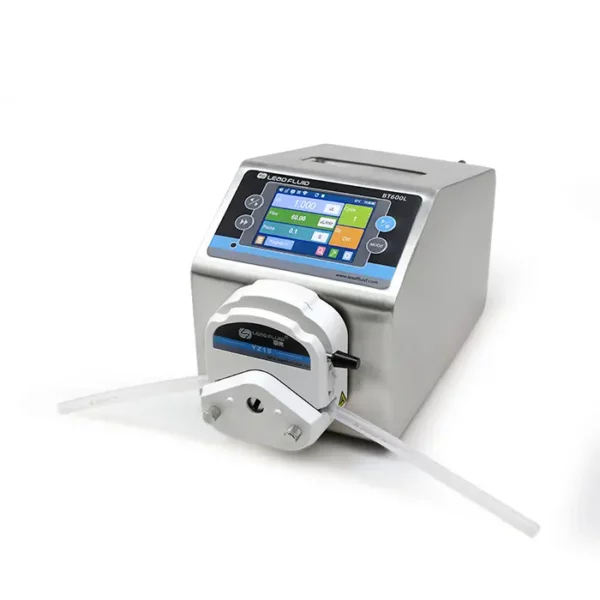Flow rate is a crucial parameter in pump operation, determining the volume of fluid that a pump can transfer within a specific time frame. Understanding the concept of flow rate and its significance is essential for selecting and utilizing pumps effectively in various applications. In this article, we will delve into the importance of flow rate in pump operation and explore its diverse applications across different industries.
Understanding Flow Rate
- Definition
Flow rate refers to the volume of fluid passing through a pump or any other conduit per unit of time. It is typically measured in units like gallons per minute (GPM), liters per second (L/s), or cubic meters per hour (m³/h). - Factors Affecting Flow Rate
Flow rate is influenced by several factors, including the pump design, impeller size, rotational speed, fluid viscosity, and system resistance or head loss. These factors determine the pump’s ability to move fluid efficiently.
II. Importance of Flow Rate in Pump Operation:
- System Performance
Flow rate directly affects the performance of a pumping system. Insufficient flow rate may result in inadequate fluid delivery, leading to system inefficiency or failure. Conversely, excessive flow rate can overload the system, potentially causing damage or compromising process integrity. - Process Efficiency
In industrial applications, maintaining a suitable flow rate is crucial for achieving optimal process efficiency. It ensures that the required amount of fluid is delivered to perform specific tasks, such as cooling, lubrication, mixing, or chemical reactions, within the desired time frame. - Equipment Selection and Sizing
Determining the required flow rate is essential for selecting the appropriate pump size and type. Understanding the system’s flow rate requirements ensures that the pump can meet the demands of the application effectively, avoiding underperformance or oversizing, which can lead to energy waste and unnecessary costs. - System Design and Optimization
Flow rate plays a vital role in designing and optimizing fluid transport systems. By accurately calculating and controlling flow rates, engineers can design piping networks, valves, and other system components to minimize pressure drops, ensure uniform distribution, and maximize system efficiency.
Applications of Flow Rate in Various Industries
- Water Supply and Distribution:Flow rate is critical in water supply systems, including municipal water distribution networks, domestic plumbing, and irrigation. It ensures an adequate supply of water to meet demand, maintain water pressure, and deliver water for various purposes, such as drinking, sanitation, and agriculture.
- HVAC Systems:Flow rate is essential in heating, ventilation, and air conditioning (HVAC) systems. It determines the circulation of cooling or heating fluids, ensuring proper temperature control, energy efficiency, and comfort in residential, commercial, and industrial buildings.
- Chemical Processing:Flow rate is crucial in chemical processing for precise delivery of chemicals, reagents, and raw materials. It ensures accurate dosing, efficient mixing, and controlled reactions in applications such as manufacturing, pharmaceutical production, and wastewater treatment.
- Oil and Gas Industry:Flow rate plays a vital role in the extraction, transportation, and processing of oil and gas. It determines the rate of fluid production, pipeline throughput, and refining processes, impacting productivity, safety, and profitability in the industry.
- Manufacturing and Industrial Processes:Flow rate is essential in various manufacturing and industrial processes, including food and beverage production, pulp and paper manufacturing, mining, and metal fabrication. It ensures consistent material supply, cooling, lubrication, and other fluid-based operations critical to production efficiency and product quality.
Measuring and Controlling Flow Rate
- Flow Rate Measurement
Flow rate can be measured using different techniques, such as flow meters, pressure differentials, or volumetric measurements. These methods provide accurate data for monitoring and controlling fluid flow in real-time. - Flow Rate Control
Flow rate can be controlled through pump speed adjustments, valve throttling, or the use of flow control devices such as flow control valves or variable frequency drives (VFDs). These mechanisms enable precise regulation of flow rates to match system requirements.
Flow rate is a fundamental parameter in pump operation,flow rate pump influencing system performance, process efficiency, equipment selection, and system design in various industries. Understanding and managing flow rate is essential for ensuring optimal fluid delivery, maintaining process integrity, and achieving efficient and reliable operation. By considering flow rate requirements and utilizing appropriate measurement and control techniques, engineers and operators can effectively utilize pumps to meet the diverse fluid transport needs of different applications.
